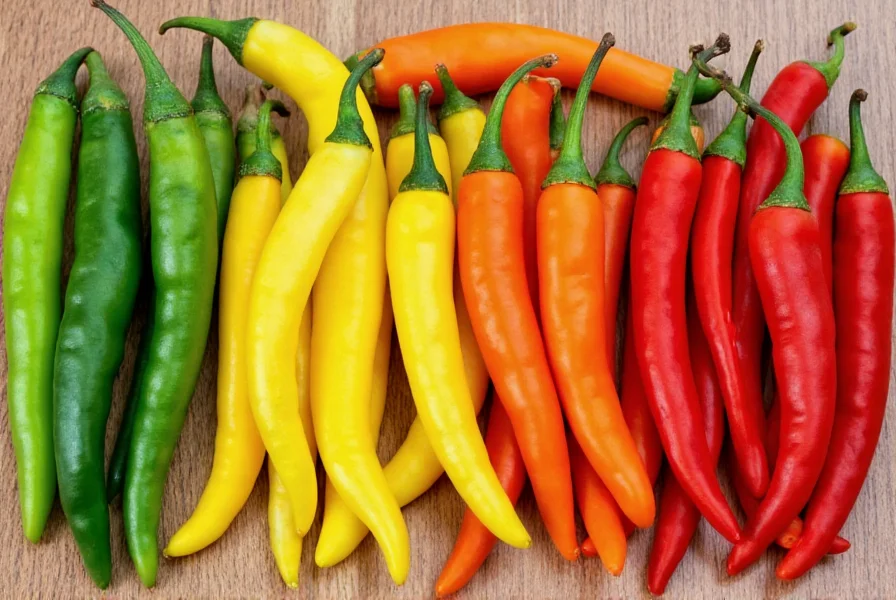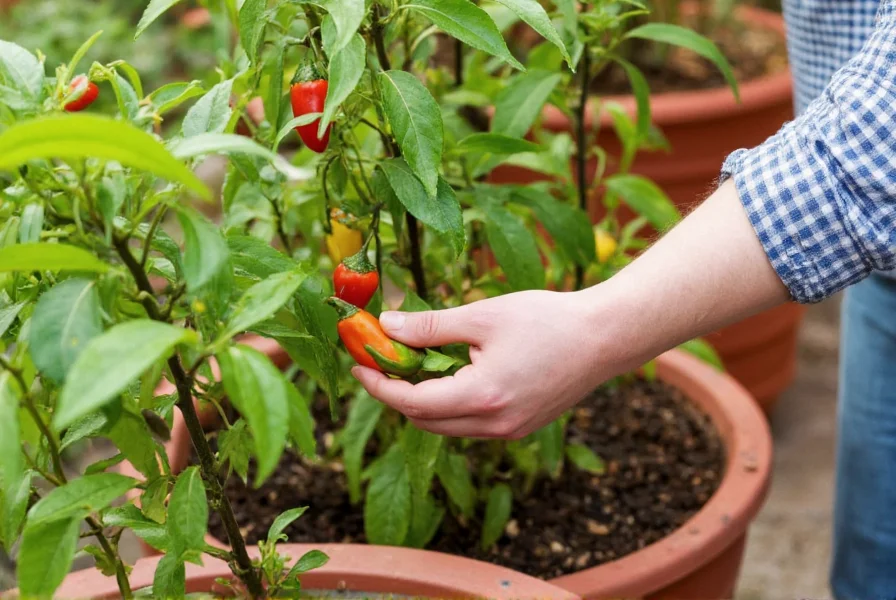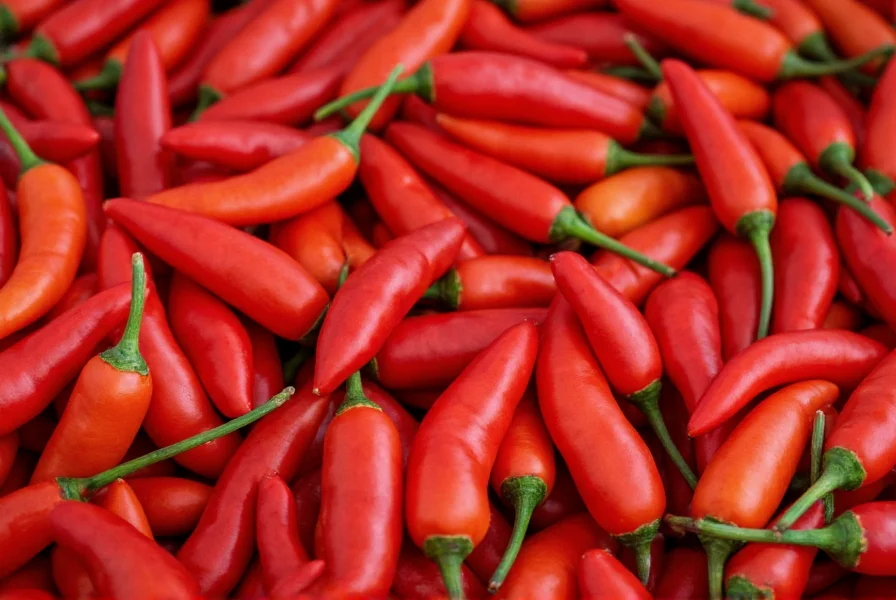Chilli peppers have captivated human palates for thousands of years, becoming integral to cuisines across the globe. These vibrant fruits—technically berries from the botanical perspective—belong to the nightshade family (Solanaceae) and the Capsicum genus. Unlike their sweet bell pepper cousins, chilli peppers contain capsaicinoids, the chemical compounds responsible for their signature heat.
The Science Behind the Burn
When you bite into a spicy chilli pepper, capsaicin binds to TRPV1 receptors in your mouth, triggering a burning sensation. This defense mechanism evolved to deter mammals from eating the peppers (birds don't feel the burn and help spread seeds). The concentration of capsaicin determines a pepper's heat level, measured in Scoville Heat Units (SHU). Pure capsaicin registers at 16 million SHU, while mild jalapeños typically range from 2,500-8,000 SHU.
Major Chilli Pepper Varieties
With hundreds of cultivated varieties, chilli peppers offer diverse flavors, colors, and heat levels. Understanding these differences helps both home cooks and professional chefs select the right pepper for their culinary creations.
| Pepper Variety | Scoville Range | Flavor Profile | Common Uses |
|---|---|---|---|
| Bell Pepper | 0 SHU | Sweet, vegetal | Salads, stuffed dishes, stir-fries |
| Poblano | 1,000-2,000 SHU | Earthy, mild heat | Mole sauce, chiles rellenos |
| Jalapeño | 2,500-8,000 SHU | Grassy, bright heat | Salsas, nachos, pickled peppers |
| Habanero | 100,000-350,000 SHU | Fruity, floral, intense heat | Hot sauces, Caribbean cuisine |
| Carolina Reaper | 1,400,000-2,200,000 SHU | Initial sweetness followed by extreme heat | Challenge videos, specialty hot sauces |
Understanding the Scoville Scale
The Scoville scale, developed by pharmacist Wilbur Scoville in 1912, measures chilli pepper heat through human taste panels. Today, high-performance liquid chromatography provides more precise measurements, but the Scoville Heat Unit (SHU) remains the standard reference.
When exploring different chilli pepper varieties, understanding where they fall on the Scoville scale helps prevent culinary disasters. Mild peppers like poblanos (1,000-2,000 SHU) add flavor without overwhelming heat, while ghost peppers (855,000-1,041,427 SHU) require careful handling. The current world's hottest pepper, the Carolina Reaper, averages over 1.5 million SHU—more than 200 times hotter than a jalapeño.

Culinary Applications Around the World
Chilli peppers have become essential ingredients across global cuisines, each culture developing unique ways to incorporate these fiery fruits. Thai cuisine features bird's eye chillies in curries, while Mexican cooking relies on complex mole sauces using multiple dried chilli varieties. Indian cuisine often uses green chillies fresh in chutneys and pickles, and Hungarian paprika—a mild chilli powder—forms the base of goulash.
When cooking with chilli peppers, remember that heat concentrates in the seeds and white pith. Removing these reduces spiciness while preserving flavor. Different cooking methods also affect heat perception—roasting mellows some peppers while drying concentrates capsaicin in others. For those exploring authentic regional dishes, understanding which specific chilli pepper varieties to use makes a significant difference in achieving authentic flavors.
Nutritional Benefits of Chilli Peppers
Beyond their heat, chilli peppers offer impressive nutritional profiles. They're exceptionally high in vitamin C—even more than citrus fruits—and contain significant amounts of vitamins A, B6, and K. The capsaicin that creates heat also provides several potential health benefits:
- Metabolism boost: Capsaicin may increase metabolic rate by up to 5%
- Pain relief: Topical capsaicin creams help with arthritis and nerve pain
- Cardiovascular health: Regular consumption may improve blood vessel function
- Antioxidant properties: Rich in carotenoids and other beneficial compounds
Growing Your Own Chilli Peppers
For gardening enthusiasts, growing chilli peppers at home offers access to fresh varieties unavailable in stores. These plants thrive in warm conditions with plenty of sunlight. Start seeds indoors 8-10 weeks before the last frost, then transplant outdoors when soil temperatures exceed 21°C (70°F).
Successful chilli pepper cultivation requires well-draining soil, consistent watering, and patience—most varieties take 60-90 days from transplanting to harvest. Container gardening works well for urban growers, with dwarf varieties like Thai hot peppers thriving in pots. Remember that stressors like slightly underwatering can increase capsaicin production, making peppers hotter.

Safety Considerations
When handling extremely hot chilli peppers, take precautions to avoid skin and eye irritation. Wear gloves when cutting super-hot varieties, and never touch your face while working with them. If you experience burning sensations, dairy products like milk or yogurt provide relief by binding to capsaicin, while water typically spreads the compound.
For those building tolerance to spicy foods, start with milder varieties and gradually progress. Pairing spicy foods with dairy, starches, or fats helps moderate the heat experience. Understanding your personal heat threshold prevents unpleasant dining experiences while allowing you to safely explore the diverse world of chilli peppers.
Conclusion
Chilli peppers represent one of nature's most fascinating botanical gifts—transforming simple dishes into complex culinary experiences while offering potential health benefits. From the mild sweetness of poblano peppers to the intense fire of Carolina Reapers, this diverse family of plants continues to inspire chefs, gardeners, and food enthusiasts worldwide. Whether you're exploring traditional recipes, experimenting with home gardening, or simply looking to add more flavor to your meals, understanding chilli pepper varieties and their properties opens up a world of culinary possibilities.
Frequently Asked Questions
What's the difference between chilli and chili peppers?
The spelling "chilli" (with double L) is commonly used in British English and Commonwealth countries, while "chili" (with one L) is the American English spelling. Both refer to the same peppers from the Capsicum genus. The term "chile" (pronounced "chee-lay") is used in Mexican and Southwestern US contexts.
How can I reduce the heat of a chilli pepper in cooking?
Remove the seeds and white pith (placenta), where most capsaicin concentrates. Cooking with dairy products like yogurt or cream can counteract heat, as can adding sugar or acidic ingredients like lime juice. Soaking chopped peppers in salt water for 10-15 minutes also reduces intensity.
Which chilli pepper is best for beginners exploring spicy foods?
Poblano peppers (1,000-2,000 SHU) offer mild heat with rich flavor, making them ideal for beginners. Anaheim peppers (500-2,500 SHU) and Cubanelle peppers (100-1,000 SHU) are also excellent starting points. These varieties provide noticeable pepper flavor without overwhelming heat.
Can eating extremely hot chilli peppers be dangerous?
While extremely uncomfortable, consuming hot chilli peppers isn't typically dangerous for healthy adults in normal culinary quantities. However, people with gastrointestinal conditions should exercise caution. The real danger comes from inhaling capsaicin powder or getting super-hot pepper oils in eyes. Always handle extremely hot varieties like ghost peppers or Carolina Reapers with gloves and eye protection.
How should I store fresh chilli peppers to maximize shelf life?
Store fresh chilli peppers in a paper bag in the refrigerator's vegetable drawer for 2-3 weeks. For longer storage, freeze whole peppers on a baking sheet before transferring to freezer bags (they'll be soft when thawed but retain flavor). Drying or pickling are excellent preservation methods that also concentrate or transform flavors.











 浙公网安备
33010002000092号
浙公网安备
33010002000092号 浙B2-20120091-4
浙B2-20120091-4